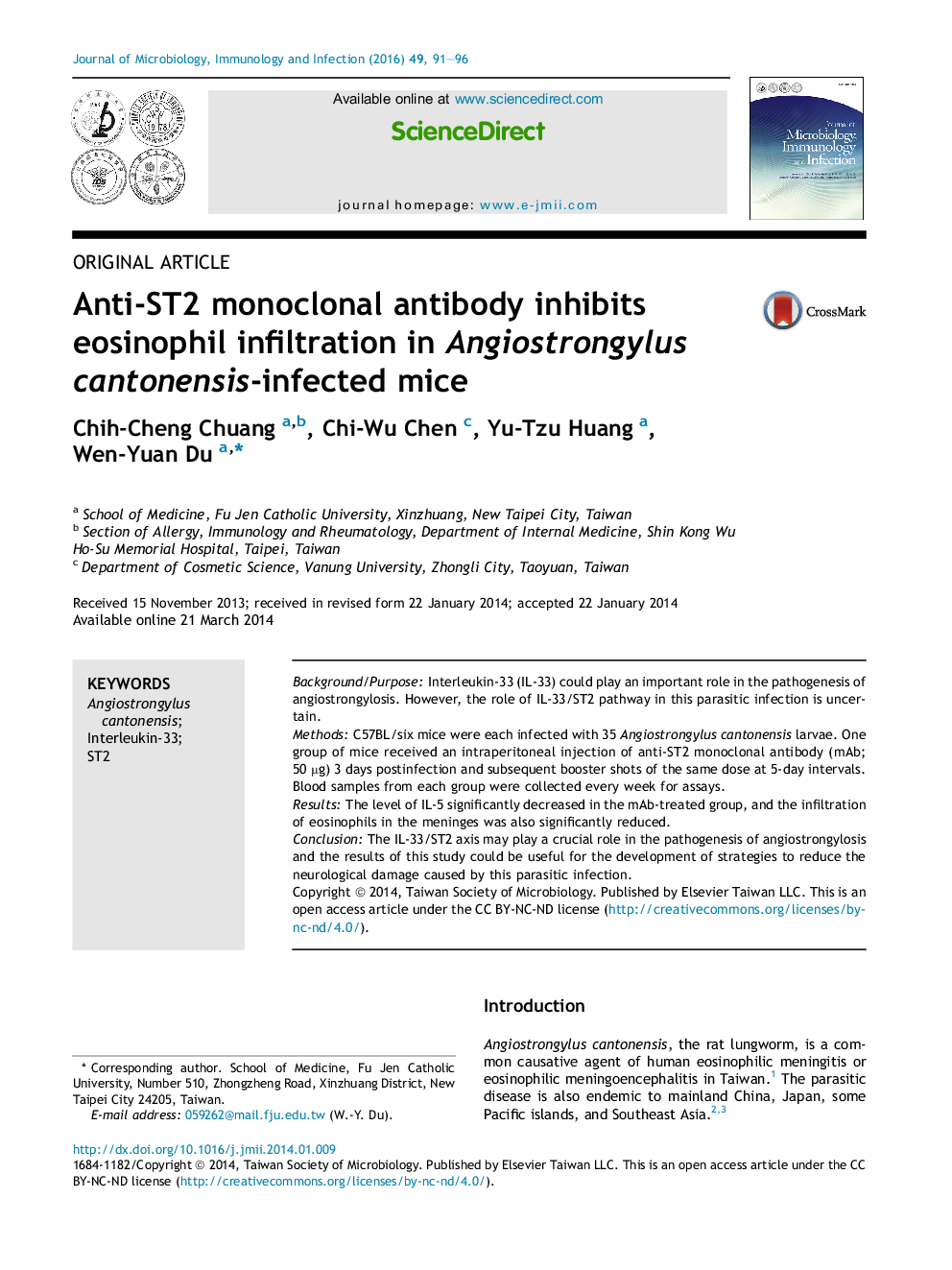| Article ID | Journal | Published Year | Pages | File Type |
|---|---|---|---|---|
| 3377778 | Journal of Microbiology, Immunology and Infection | 2016 | 6 Pages |
Background/PurposeInterleukin-33 (IL-33) could play an important role in the pathogenesis of angiostrongylosis. However, the role of IL-33/ST2 pathway in this parasitic infection is uncertain.MethodsC57BL/six mice were each infected with 35 Angiostrongylus cantonensis larvae. One group of mice received an intraperitoneal injection of anti-ST2 monoclonal antibody (mAb; 50 μg) 3 days postinfection and subsequent booster shots of the same dose at 5-day intervals. Blood samples from each group were collected every week for assays.ResultsThe level of IL-5 significantly decreased in the mAb-treated group, and the infiltration of eosinophils in the meninges was also significantly reduced.ConclusionThe IL-33/ST2 axis may play a crucial role in the pathogenesis of angiostrongylosis and the results of this study could be useful for the development of strategies to reduce the neurological damage caused by this parasitic infection.
